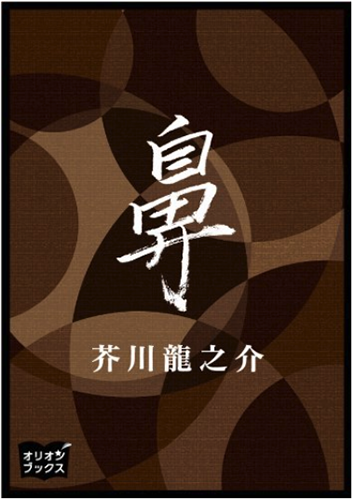209. The "Nose" Radical: 鼻
Many years ago, I planned to meet my Japanese-language partner for the first time. He lived in Japan but was passing through San Francisco on business, accompanied by his boss. Terrified of using my rickety Japanese with two native speakers, I spent days cramming for the get-together by reading annotated Japanese fiction, including a version of this famous Akutagawa story:

The title is「鼻 (はな)」or, in English, "The Nose."
Looking to establish common ground during those early awkward minutes together, I eagerly showed the two men what I'd been reading. They murmured something vague with no enthusiasm.
Confused, I said, "It's famous, right?"
"Oh, yes," the boss assured me.
"And you've read it?"
"Sure, we had to in school."
The Q&A went on for a bit until I finally mentioned their apparent lack of excitement about the story.
The boss then replied in clear, incisive English: "I said that we've all read it and that we had to read it. I didn't say any of us actually liked the story."
Ah, I hadn't considered that!
Maybe the Japanese feel more warmly toward the "nose" radical 鼻, which looks identical to the only Joyo kanji in which it's on duty:
鼻 (377: nose)
Just as this kanji carries the Joyo kun-yomi はな, the Japanese call the radical はな. If the radical occupies the left side of a character, then はなへん is appropriate.
The Parent and the Variant
We find a left-side 鼻 radical only in non-Joyo kanji such as 鼾 (snoring). Let me blow that up for you:
鼾
As you can now see, this kanji includes our radical in a variant form that was actually the original way of writing 鼻. The difference is in the bottom—an 廾 in the parent versus a kind of π in the variant. Either way, our radical has 14 strokes.
What Do All Those Strokes Represent?
That's a lot of strokes for a nose! Here's what Henshall says about the etymology of 鼻 in his newer edition: Originally, 自 represented "nose" as a pictograph of that body part. By the seal-script stage, the character combined 自 with the phonetic 畀 (arrow with big head). Depending on which researcher you ask, the 畀 conveyed one of these associated senses: "stick out," "two things are together," or "naturally drawn in and expel air."
